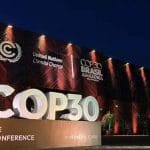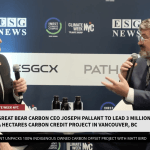China’s 15th Five-Year Plan: A Green Revolution for Real Estate, Per Cushman & Wakefield

China’s 15th Five-Year Plan (2026-2030) is set to overhaul the real estate sector, pivoting toward sustainability, green innovation, and ESG-driven growth, according to a new Cushman & Wakefield report. The analysis spotlights how this blueprint could unlock massive opportunities for ESG investors eyeing low-carbon assets in the world’s largest property market.
Why it matters
For ESG investors, real estate is a emissions powerhouse—accounting for 34% of global carbon output. China’s shift to zero-carbon zones and ESG-integrated valuations could supercharge sustainable portfolios, aligning with global net-zero goals while offering resilient returns in emerging sectors like EVs and AI.
The big picture
The plan ditches China’s old playbook of speculative builds and infrastructure frenzy for “high-quality development.” It builds on the 14th Five-Year Plan amid post-COVID hurdles, geopolitical tensions, and economic slowdowns, emphasizing domestic demand, tech self-reliance, and green modernization by 2035.
Cushman & Wakefield’s report, The 15th Five-Year Plan — Reshaping China’s Real Estate Market Landscape for the Next Five Years, decodes the Fourth Plenary Session communique, forecasting upgrades in offices, industrial parks, retail, and logistics—all with a sustainability lens.
Driving the news: Five ESG-linked impacts
- New productive forces sparking green demand Sectors like new energy vehicles (NEVs), biomedicine, and AI are booming.
- NEV production hit 12.8 million units in 2024 (72% CAGR, 76.4% global share).
- China led global pharma deals at 42% in early 2025.
- Industrial robot installs topped 276,300 in 2023—six times Japan’s. ESG angle: Expect surges in low-carbon industrial parks and tech offices, drawing investors to policy-backed green assets.
- Domestic demand fueling sustainable retail From “build more” to “invest in people,” the plan boosts human capital via education, healthcare, and housing reforms.
- Childcare subsidies and free preschool aim to spark consumption.
- Consumer REITs are hot: 11 listed, with two (Cathay Shih Mei, E Fund Huawei Farmers’ Market) up over 70% by mid-October 2025. ESG angle: Retail repositioning for eco-conscious consumers could elevate sustainable properties in investor portfolios.
- High-quality opening luring green capital Amid protectionism, China’s opening-up draws foreign funds.
- Panda bonds exceed RMB 1 trillion, thanks to low costs.
- RMB stability and clear targets signal inflows. ESG angle: Global investors eye retail, logistics, data centers, and offices—prime for ESG funds seeking Asia-Pacific exposure.
- Livelihood focus reshaping housing Real estate now a “livelihood sector,” not speculation hub.
- GDP share fell to 7.4% in 2024 (from 15% in 2014), nearing U.S. levels (~12%).
- Push for affordable housing, rentals, and urban renewal. ESG angle: Social impact via inclusive development boosts “S” in ESG, attracting impact investors to resilient, community-focused projects.
- Green transformation accelerating Target: ~100 zero-carbon industrial parks by 2030.
- Buildings drive 34% of emissions (UNEP report).
- ESG metrics now core to project valuations. ESG angle: This mandates sustainability, rewarding investors in green retrofits and low-emission builds for long-term alpha.
RELATED ARTICLE: Cushman & Wakefield Finds Decarbonizing Existing Real Estate Vital to Addressing Climate Change
What they’re saying
Sabrina Wei, Chief Policy Analyst and Head of Research, North China, Cushman & Wakefield: “The 15th Five-Year Plan… is driving China’s economy to shift from investment and export dependence to a new model underpinned by domestic demand and coordinated supply and demand. The positive impacts… will see the commercial real estate industry usher in an upgrade period across… industrial real estate, retail properties, cross-border asset allocation, and green real estate.“

Zoom out
This aligns with global ESG trends, from Europe’s green building mandates to U.S. net-zero pledges. But China’s scale—massive urbanization and manufacturing—makes it a game-changer for investors betting on Asia’s low-carbon pivot.
What’s next
ESG investors, watch for:
- Zero-carbon park rollouts.
- Green REIT and fund expansions.
- Stricter ESG disclosures.
- Policy incentives for efficiency and adaptation.
- International tie-ups in sustainable logistics and offices.
Access the full Cushman & Wakefield report here.








